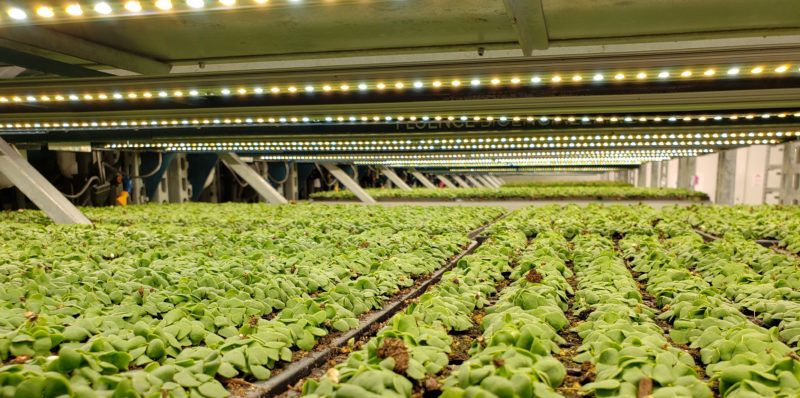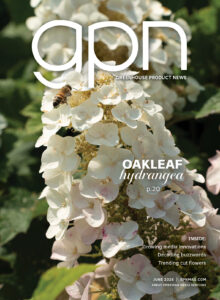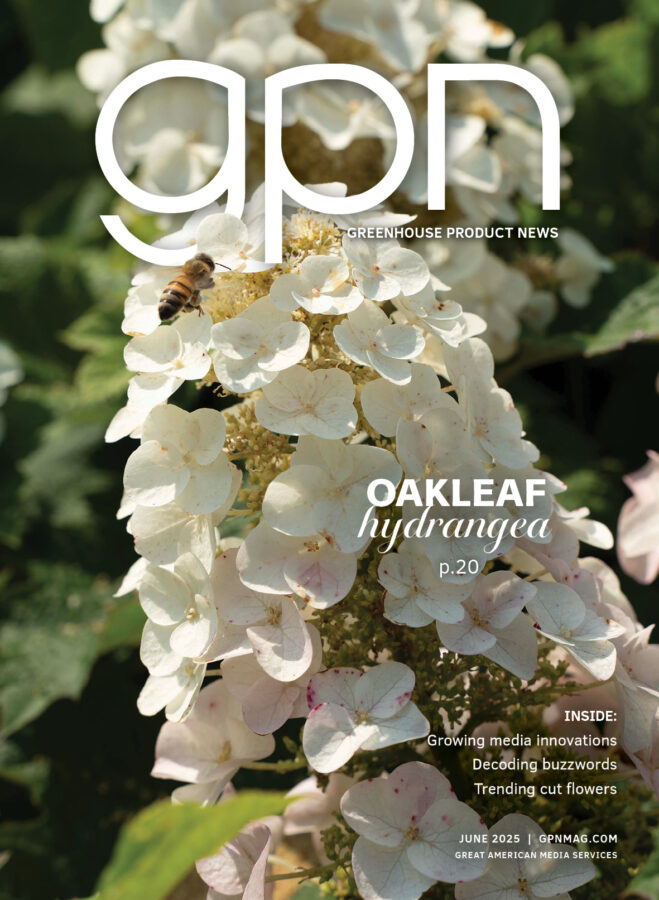
Indoor Propagation
We use greenhouses primarily to regulate the environment inside, creating conditions suitable for plant growth most or all of the year. However, greenhouses are still subject to weather conditions and daily and seasonal changes in temperature, light, and other environmental parameters.
Although we can temper some of these changes by cooling and heating systems, supplemental lighting, shade curtains, etc., conditions are still not controlled in a predictable and consistent manner. As a result, there are still differences in greenhouse crops produced from one location to another, from one month to the next.
When grown indoors, inside refrigerated growth rooms and without sunlight, crops can be propagated uniformly and predictably year-round. Indoor propagation is certainly more expensive than in greenhouses, but it can be economical in some situations, such as with high-value crops like young plants (plugs and cuttings), and especially for difficult-to-propagate varieties. This article briefly lists some of the important considerations for an indoor propagation facility.
Lighting. Light-emitting diodes (LEDs) are the clear favorite for indoor propagation because of their energy efficacy and range of spectra available. Most young plants grow well under a daily light integral of 10 to 12 mol·m–2·d–1 and a photoperiod of 18 to 20 hours, which calculates to an instantaneous light intensity of 140 to 185 μmol·m–2·s–1. (A lower intensity may be desirable in some cases, such as when acclimating tissue-cultured plants once out of the flask.) In addition to intensity, also consider lighting uniformity, since that influences plant uniformity. Fixtures that meet horticultural lighting specifications by the DesignLights Consortium (www.designlights.org) are recommended because they meet important technical performance requirements.
The “best” photon spectrum is situational, depending on the crops and characteristics desired. Fixtures that include white LEDs make it easier for us to see and interact with plants (Figure 1). Elevated blue light can make leaves and stems more compact, which can reduce or eliminate the need for plant growth retardants.
A fixture that emits a modest intensity (10 to 20 μmol·m–2·s–1) of far-red radiation can accelerate flowering of some crops, especially long-day plants, but it can also increase extension growth. For much more information on lighting for young-plant production, visit www.endowment.org/series-on-leds.
HVAC. Indoor propagation requires a heating, ventilation and air conditioning system to remove excess water vapor and deliver the desired temperature setpoints. Work with an engineer who has experience and expertise in determining the refrigeration capacity needed considering the heat generated by the lighting fixtures as well as water transpired by plants. Engineers without sufficient plant-based expertise often under-estimate the demand for dehumidification, which can greatly limit production capacity and/or create
unfavorable environments.
Design, layout and watering. One of the biggest challenges is designing an indoor growth room that facilitates access to plants and has an effective and labo-efficient watering system. Subsurface irrigation is usually preferred because leaves don’t get wet and much less water is lost to non-target areas, which then needs to be removed by the HVAC system. Some growers are using carts modified so that watering can be semiautomated and recirculated.
Humidity and air movement. In some cases, a very high humidity (near saturation) can be desired in propagation, such as for callusing of cuttings or weaning of tissue-culture plants. Rooted plants don’t grow well at such a high humidity, so a separate facility may be needed for these high-humidity applications. Once plants have an initial root system, or for seedlings, we have observed that an intermediate humidity (60 to 75%) works well. Watering frequency increases when the humidity is too low, and when humidity is too high, root systems can be less developed and disease pressure increases. In addition, as in a greenhouse, some air movement is desired to create a more uniform aerial environment.









 Video Library
Video Library 


















